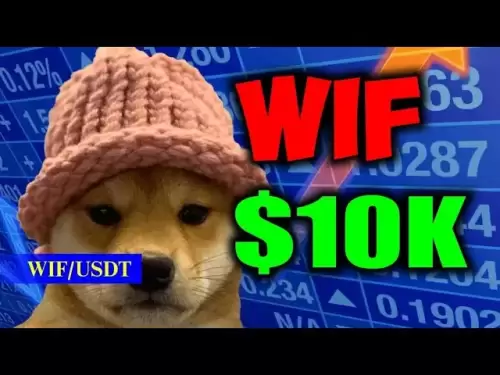-
 Bitcoin
Bitcoin $106,754.6083
1.33% -
 Ethereum
Ethereum $2,625.8249
3.80% -
 Tether USDt
Tether USDt $1.0001
-0.03% -
 XRP
XRP $2.1891
1.67% -
 BNB
BNB $654.5220
0.66% -
 Solana
Solana $156.9428
7.28% -
 USDC
USDC $0.9998
0.00% -
 Dogecoin
Dogecoin $0.1780
1.14% -
 TRON
TRON $0.2706
-0.16% -
 Cardano
Cardano $0.6470
2.77% -
 Hyperliquid
Hyperliquid $44.6467
10.24% -
 Sui
Sui $3.1128
3.86% -
 Bitcoin Cash
Bitcoin Cash $455.7646
3.00% -
 Chainlink
Chainlink $13.6858
4.08% -
 UNUS SED LEO
UNUS SED LEO $9.2682
0.21% -
 Avalanche
Avalanche $19.7433
3.79% -
 Stellar
Stellar $0.2616
1.64% -
 Toncoin
Toncoin $3.0222
2.19% -
 Shiba Inu
Shiba Inu $0.0...01220
1.49% -
 Hedera
Hedera $0.1580
2.75% -
 Litecoin
Litecoin $87.4964
2.29% -
 Polkadot
Polkadot $3.8958
3.05% -
 Ethena USDe
Ethena USDe $1.0000
-0.04% -
 Monero
Monero $317.2263
0.26% -
 Bitget Token
Bitget Token $4.5985
1.68% -
 Dai
Dai $0.9999
0.00% -
 Pepe
Pepe $0.0...01140
2.44% -
 Uniswap
Uniswap $7.6065
5.29% -
 Pi
Pi $0.6042
-2.00% -
 Aave
Aave $289.6343
6.02%
Will it continue to fall after three crows?
The three crows candlestick pattern signals a potential bearish reversal after an uptrend, marked by three consecutive red candles with lower closes and short shadows.
Jun 18, 2025 at 08:35 pm
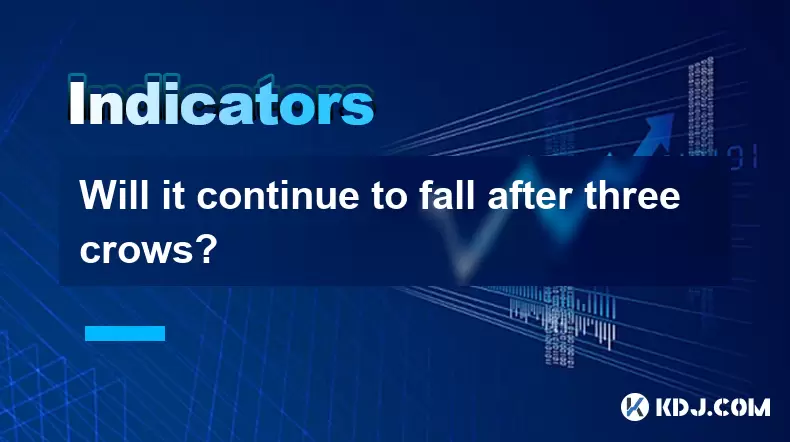
Understanding the "Three Crows" Candlestick Pattern
The three crows pattern is a well-known candlestick formation used by traders to identify potential reversals in an uptrend. It consists of three consecutive bearish (red or black) candles that appear after a prolonged bullish trend. Each candle typically opens within the body of the previous candle and closes lower, indicating increasing selling pressure.
This pattern is significant because it signals that market sentiment may be shifting from bullish to bearish. Traders often interpret this as a warning sign that the current upward momentum is weakening. However, it's crucial to note that the presence of the three crows does not guarantee a continued downtrend. Additional confirmation through volume analysis, support/resistance levels, or other technical indicators is usually necessary before making trading decisions.
How to Identify the Three Crows Pattern
Recognizing the three crows pattern accurately is essential for effective technical analysis. Here are the key characteristics:
- Three consecutive bearish candles: Each candle should close lower than the previous one.
- Each candle opens within the range of the prior candle’s body, not gapping too far away.
- Candles have short or nonexistent lower shadows, suggesting consistent selling pressure throughout each session.
- The pattern appears after a clear upward price movement, not during consolidation or a downtrend.
Misidentifying the pattern can lead to incorrect assumptions about market direction. Therefore, it’s important to ensure that all these conditions are met before labeling a sequence of candles as “three crows.”
What Happens After the Three Crows Appear?
Once the three crows pattern forms, many traders expect a continuation of the bearish trend. However, price action after this pattern can vary significantly depending on market conditions. In some cases, the decline continues due to strong selling pressure. In others, the market may consolidate or even reverse back into an uptrend if buyers step in.
It's important to monitor the following factors after spotting the three crows:
- Volume: A surge in trading volume during or after the pattern increases the likelihood of a sustained downtrend.
- Support levels: If the price approaches a known support zone after the pattern, a bounce might occur.
- Other technical indicators: Moving averages, RSI, or MACD can provide additional insight into whether the trend is likely to continue downward.
Traders who act solely based on the appearance of the three crows without confirming with other tools risk entering trades prematurely.
Using the Three Crows in Trading Strategy
Incorporating the three crows into a trading strategy requires more than just recognizing the pattern. Here’s how traders can approach it methodically:
- Look for confluence with other indicators: For example, if the three crows form near a resistance level and the RSI is overbought, the probability of a reversal increases.
- Set stop-loss orders above the high of the pattern to manage risk effectively.
- Use Fibonacci retracement levels to determine potential targets for the downward move.
- Consider waiting for a bearish confirmation candle after the three crows before entering a short position.
Some traders also combine this pattern with volume analysis, looking for increased volume on the third crow to confirm the strength of the sell-off. This helps distinguish between a genuine reversal and a temporary pullback.
Common Mistakes When Interpreting the Three Crows
Many novice traders make the mistake of treating the three crows as a guaranteed signal for a downtrend. However, several pitfalls can lead to poor decision-making:
- Ignoring the broader market context: If the overall trend is still bullish, the three crows might only indicate a short-term correction rather than a full reversal.
- Failing to wait for confirmation: Entering a trade immediately after seeing the three crows without confirmation can result in losses if the price bounces back.
- Not using proper risk management: Even when the pattern works correctly, failing to set appropriate stop-loss levels can lead to significant drawdowns.
Another common error is applying the three crows pattern to low-timeframe charts without verifying its significance on higher timeframes. Higher timeframes like the daily or weekly chart often provide more reliable signals.
Frequently Asked Questions (FAQ)
Q: Does the three crows pattern always lead to a downtrend?
A: No, the three crows pattern suggests a potential bearish reversal but does not guarantee it. Market conditions, volume, and other technical indicators must be considered for confirmation.
Q: Can the three crows pattern appear in cryptocurrency markets?
A: Yes, the three crows pattern is applicable across all financial markets, including cryptocurrencies. However, due to the high volatility of crypto assets, it's especially important to use additional tools for confirmation.
Q: Is the three crows pattern more reliable on certain timeframes?
A: Generally, the pattern is more reliable on higher timeframes such as the 4-hour, daily, or weekly charts. Lower timeframes tend to produce more false signals.
Q: Should I always take a short position after seeing the three crows?
A: No, you should not assume a short trade automatically. Wait for further confirmation, such as a breakdown below key support or bearish divergence in momentum indicators, before entering a trade.
Disclaimer:info@kdj.com
The information provided is not trading advice. kdj.com does not assume any responsibility for any investments made based on the information provided in this article. Cryptocurrencies are highly volatile and it is highly recommended that you invest with caution after thorough research!
If you believe that the content used on this website infringes your copyright, please contact us immediately (info@kdj.com) and we will delete it promptly.
- Staked Ether, Corporate Crypto, and Finance Adoption: A New York Minute
- 2025-06-21 02:45:13
- Pendle, DeFi, and the SEC: A New York Minute on Crypto's Crossroads
- 2025-06-21 02:25:13
- Reddit, Worldcoin, and Iris Scanning: A New Era of User Verification?
- 2025-06-21 02:45:13
- Investor Funds, Bitcoin, and Buying Tricks: Navigating the Crypto Landscape
- 2025-06-21 02:50:12
- TikTok, Trump, and a $300 Million Crypto Bribe? What's the Deal?
- 2025-06-21 03:10:57
- Pi Network's Open Mainnet: Hype or Hope for a Decentralized Future?
- 2025-06-21 03:25:12
Related knowledge

Does the sudden contraction of ATR indicate the end of the trend?
Jun 20,2025 at 11:14pm
Understanding ATR and Its Role in Technical AnalysisThe Average True Range (ATR) is a technical indicator used to measure market volatility. Developed by J. Welles Wilder, ATR calculates the average range of price movement over a specified period, typically 14 periods. It does not indicate direction—only volatility. Traders use ATR to gauge how much an ...

Is the trend continuation when the Williams indicator is oversold but there is no rebound?
Jun 20,2025 at 11:42pm
Understanding the Williams %R IndicatorThe Williams %R indicator, also known as the Williams Percent Range, is a momentum oscillator used in technical analysis to identify overbought and oversold levels in price movements. It typically ranges from 0 to -100, where values above -20 are considered overbought and values below -80 are considered oversold. T...

Is the golden cross of the ROC indicator below the zero axis effective?
Jun 20,2025 at 09:42pm
Understanding the ROC Indicator and Its Role in Cryptocurrency TradingThe Rate of Change (ROC) indicator is a momentum oscillator widely used by traders to assess the speed at which cryptocurrency prices are changing. It measures the percentage difference between the current price and the price from a certain number of periods ago. The ROC helps identif...
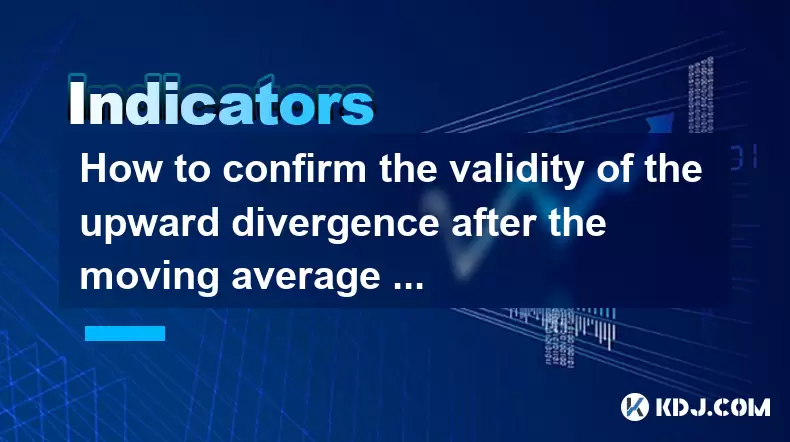
How to confirm the validity of the upward divergence after the moving average sticks together?
Jun 21,2025 at 01:36am
Understanding the Basics of Moving Averages and DivergenceIn technical analysis, moving averages are crucial tools used to smooth out price data over a specified time period. When multiple moving averages converge or 'stick together,' it often indicates a consolidation phase in the market. This phenomenon can be a precursor to significant price movement...
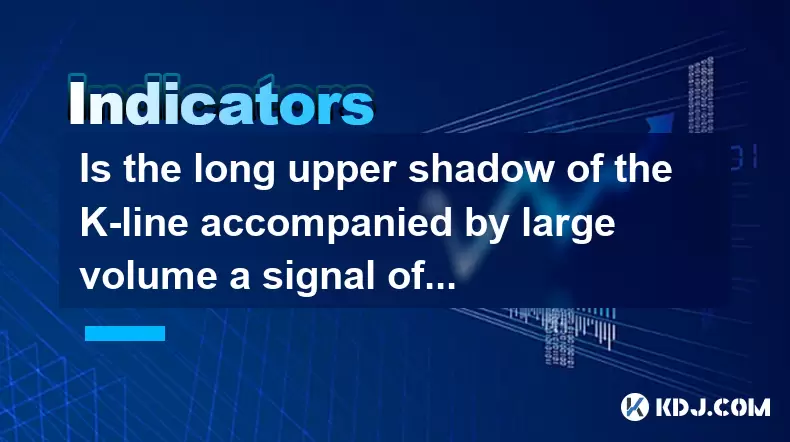
Is the long upper shadow of the K-line accompanied by large volume a signal of peaking?
Jun 21,2025 at 12:28am
Understanding the Long Upper Shadow K-LineThe long upper shadow of a K-line is a common candlestick pattern that often appears during price action analysis. It consists of a small real body with a long upper wick, indicating that the price rose significantly during the period but was ultimately rejected and closed lower than its high. This pattern can s...
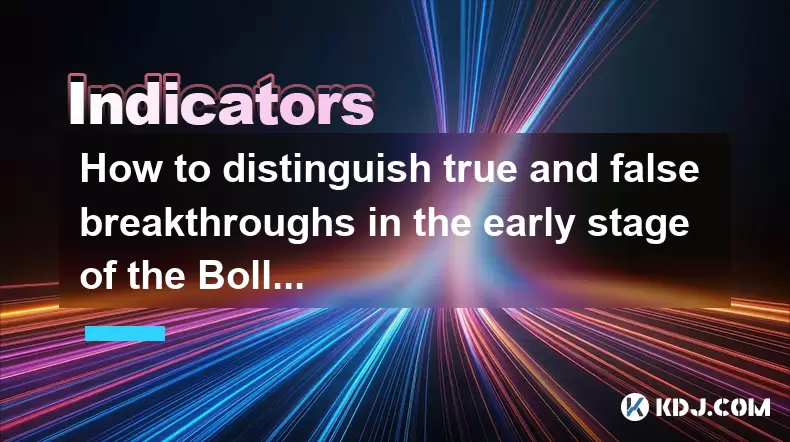
How to distinguish true and false breakthroughs in the early stage of the Bollinger Band opening?
Jun 20,2025 at 10:35pm
Understanding the Bollinger Band StructureBollinger Bands consist of three lines: a simple moving average (SMA) in the middle, and two outer bands that are standard deviations away from the SMA. These bands expand and contract based on market volatility. When the bands begin to widen, it often signals an increase in price volatility, which traders inter...

Does the sudden contraction of ATR indicate the end of the trend?
Jun 20,2025 at 11:14pm
Understanding ATR and Its Role in Technical AnalysisThe Average True Range (ATR) is a technical indicator used to measure market volatility. Developed by J. Welles Wilder, ATR calculates the average range of price movement over a specified period, typically 14 periods. It does not indicate direction—only volatility. Traders use ATR to gauge how much an ...

Is the trend continuation when the Williams indicator is oversold but there is no rebound?
Jun 20,2025 at 11:42pm
Understanding the Williams %R IndicatorThe Williams %R indicator, also known as the Williams Percent Range, is a momentum oscillator used in technical analysis to identify overbought and oversold levels in price movements. It typically ranges from 0 to -100, where values above -20 are considered overbought and values below -80 are considered oversold. T...

Is the golden cross of the ROC indicator below the zero axis effective?
Jun 20,2025 at 09:42pm
Understanding the ROC Indicator and Its Role in Cryptocurrency TradingThe Rate of Change (ROC) indicator is a momentum oscillator widely used by traders to assess the speed at which cryptocurrency prices are changing. It measures the percentage difference between the current price and the price from a certain number of periods ago. The ROC helps identif...

How to confirm the validity of the upward divergence after the moving average sticks together?
Jun 21,2025 at 01:36am
Understanding the Basics of Moving Averages and DivergenceIn technical analysis, moving averages are crucial tools used to smooth out price data over a specified time period. When multiple moving averages converge or 'stick together,' it often indicates a consolidation phase in the market. This phenomenon can be a precursor to significant price movement...

Is the long upper shadow of the K-line accompanied by large volume a signal of peaking?
Jun 21,2025 at 12:28am
Understanding the Long Upper Shadow K-LineThe long upper shadow of a K-line is a common candlestick pattern that often appears during price action analysis. It consists of a small real body with a long upper wick, indicating that the price rose significantly during the period but was ultimately rejected and closed lower than its high. This pattern can s...

How to distinguish true and false breakthroughs in the early stage of the Bollinger Band opening?
Jun 20,2025 at 10:35pm
Understanding the Bollinger Band StructureBollinger Bands consist of three lines: a simple moving average (SMA) in the middle, and two outer bands that are standard deviations away from the SMA. These bands expand and contract based on market volatility. When the bands begin to widen, it often signals an increase in price volatility, which traders inter...
See all articles


























